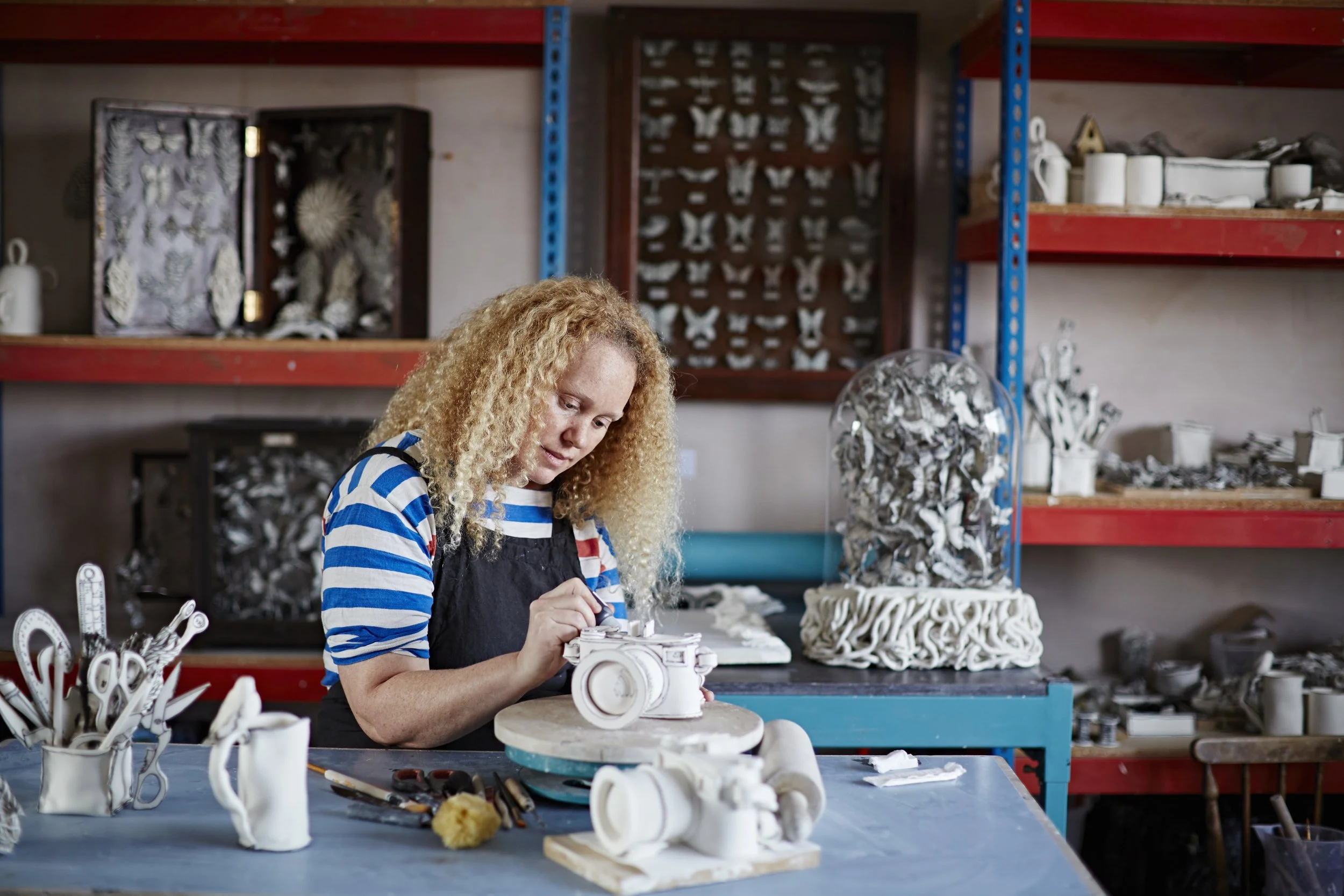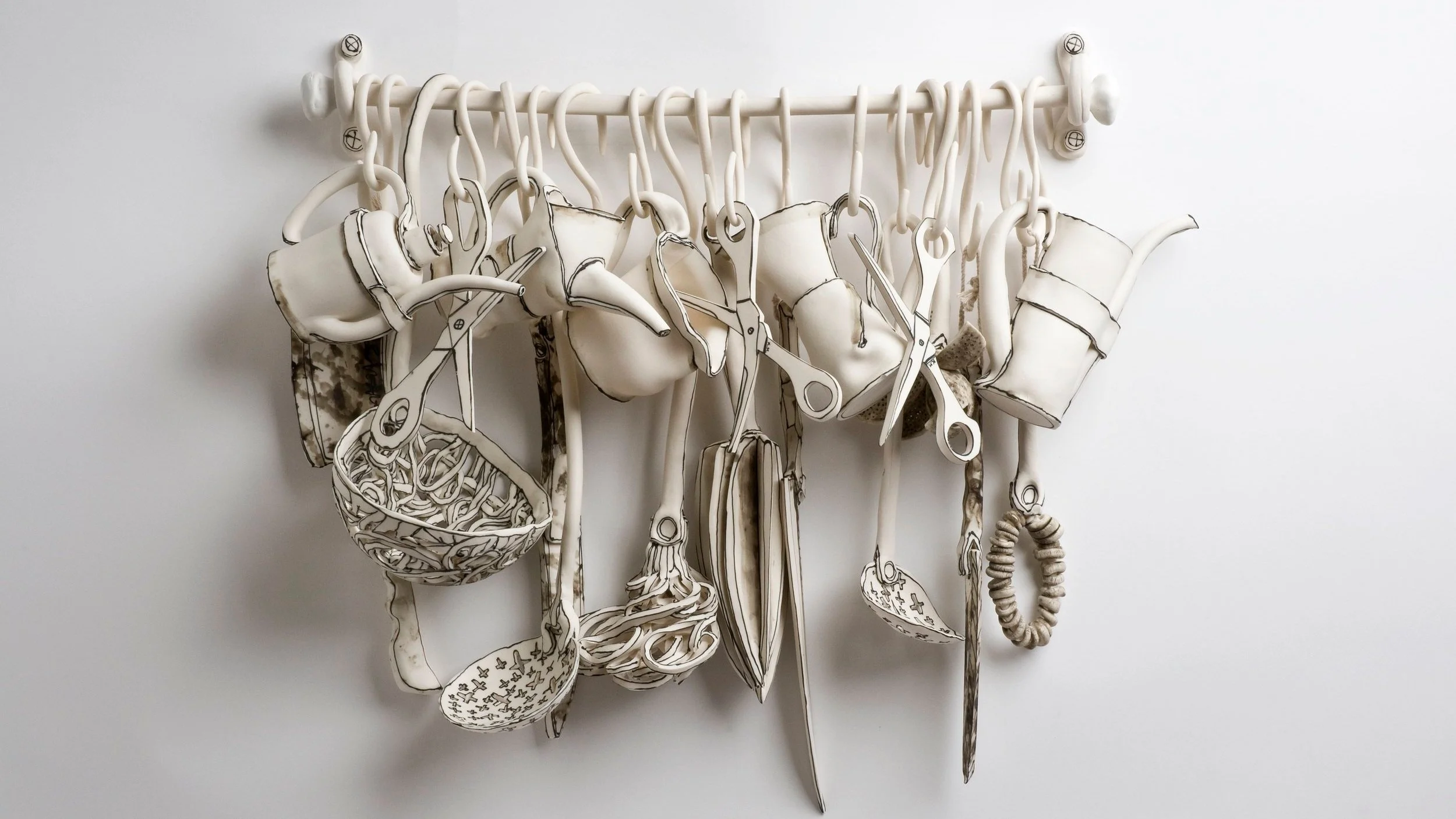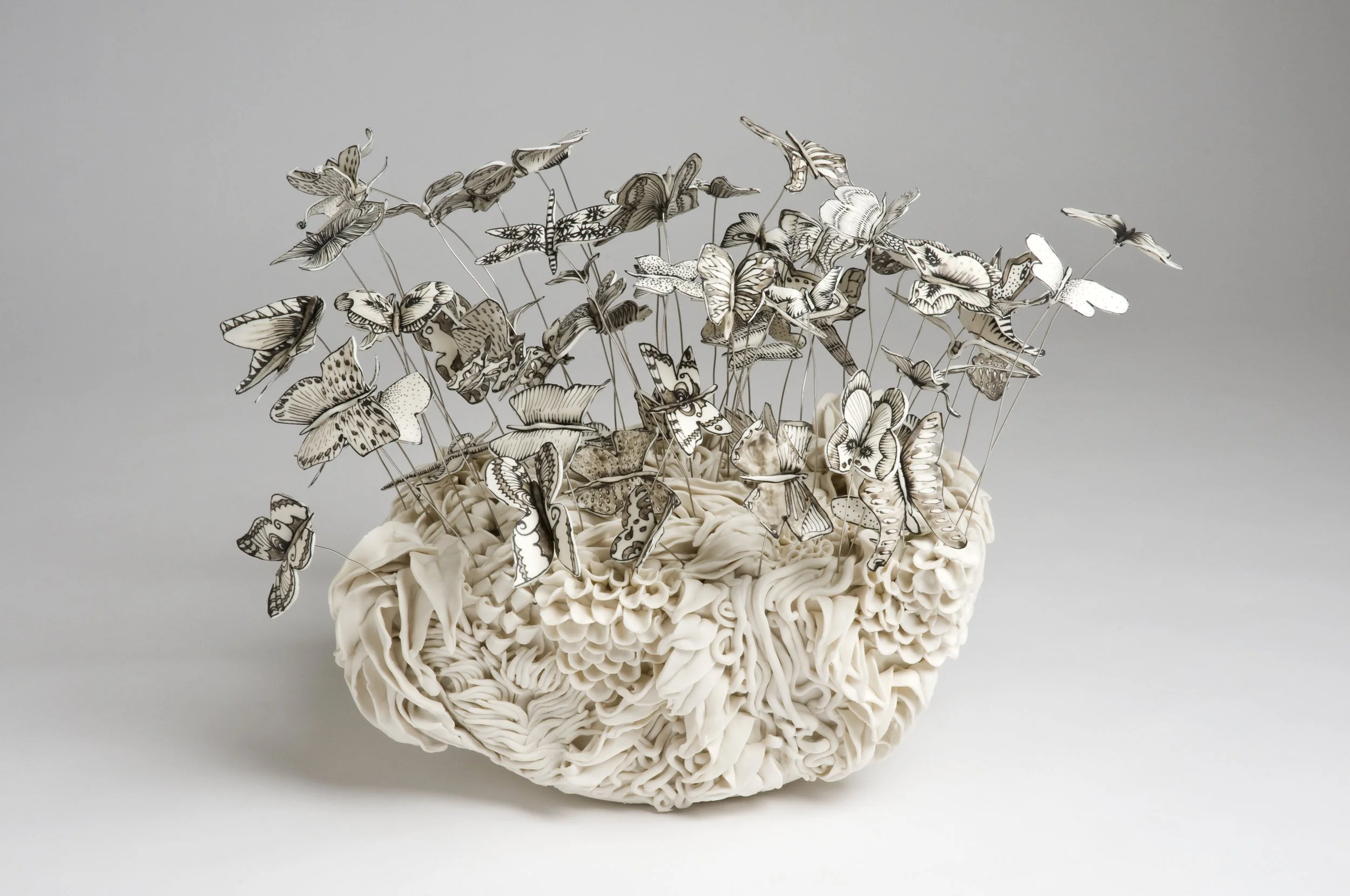CERAMIC SCULPTURES WITH KATHERINE MORLING
All Photos Courtesy of Katherine Morling.
When you think ‘porcelain,’ you probably think tea cups and china. But ceramic artist Katherine Morling has thrown all of that out the window with her totally amazing porcelain sculptures. They depict inanimate objects that are given new life through drawn lines and beautiful surfaces. The London-based artist has been working on her “three-dimensional drawings” for over ten years now, perfecting this totally unique art of bringing drawings to life.
And prefect it is just what she has done! I just couldn’t believe my eyes when I first came across these pieces at Bergdorfs in NYC. I seriously stood there what must have been 15 minutes just transfixed by her work. for So graphic, so detailed and so striking! They truly encapsulate the feeling of a worn in measuring tape, or a beat up boom box. Her style is very unique, always using a black line drawing to detail the flat white porcelain surfaces to really make the pieces so eye catching. I had to know more, so I reached out to her directly. Lucky for me, she agreed to do an interview with us so I was able to ask Katherine a few questions about her process and inspiration when it comes to working with clay.
INTERIOR MONOLOGUE: What drew you to working with clay as a medium?
KATHERINE MORLING: It all started when I signed up for evening classes when I lived in Penzance, I was looking through the catalogue and was intrigued by the ceramic course. I really enjoyed it. From this, I did an A-level in Ceramics with John Cockfield who was incredibly supportive, which really helped me develop. Once I found the support, I found making became even easier. I find making and working with clay very relaxing and therapeutic.
I chose to use porcelain in my work as I was looking for a very smooth white background to draw on – like a piece of paper. Porcelain is perfect as it slightly melts and moves in the kiln so it has a very naturally relaxed feel. My Tape Measure piece is a lovely example of this as the tape winds and bends very naturally.
INTERIOR MONOLOGUE: Your style evokes a kind of free-form, hand drawn feeling. Do you start with a sketch for each piece? Or do you sculpt from the object itself (like the radio, or sewing machine)?
KATHERINE MORLING: I work from drawings and images; I don’t work from physical objects. When I start a new piece, I’ll begin by researching, finding pictures and source materials. I get a good group of images and then will take aspects from each image and add them to my design.
INTERIOR MONOLOGUE: Where do you find inspiration for your pieces? Do you pull more upon fine art or ceramics?
KATHERINE MORLING: The inspiration for my work is all completely personal, part of my personal narrative. The meaning of each piece is often completely separate from the object itself. From a purely sales point, I find myself in the art world.
INTERIOR MONOLOGUE: Can you describe for us your process? How does a work come about, from idea to creation, to finished piece?
KATHERINE MORLING: To start, I will draw very quickly lots of quick sketches, just pouring out my ideas. I then select a few and make further drawings to flesh out the idea. I end up with a sheet of sketches on the studio wall with about 20 small drawings. Often, I will be drawn to one of these and this is what I will be making next.
If it is a large work, I will have to plan the internal structure and any external temporary supports to then on to the making. I take a bag of porcelain and a rolling pin and a couple of tools and just start making. It’s fine if a piece doesn’t work out but it is important for me to work fairly quickly as the clay does not like to be laboured and it looks fresher the less it is manipulated.
The work is then dried out slowly and fired to bisque at 960 centigrade. I then draw on a black underglaze. When I’m happy with the work it goes back in the kiln and fired again to 1260 centigrade.
INTERIOR MONOLOGUE: Clay and porcelain are so often used to create functional art, what inspired you to use it for such magical fine art pieces?
KATHERINE MORLING: I started trying to make functional pieces and did get to a point where I had a really nice body of gas-fired glazes and my throwing was getting very good. At the same time, I was doing more artworks and found them much for interesting and enjoyable, so I was drawn to this. Now I am able to make what I love.
Photo credit: Rob Brinson




